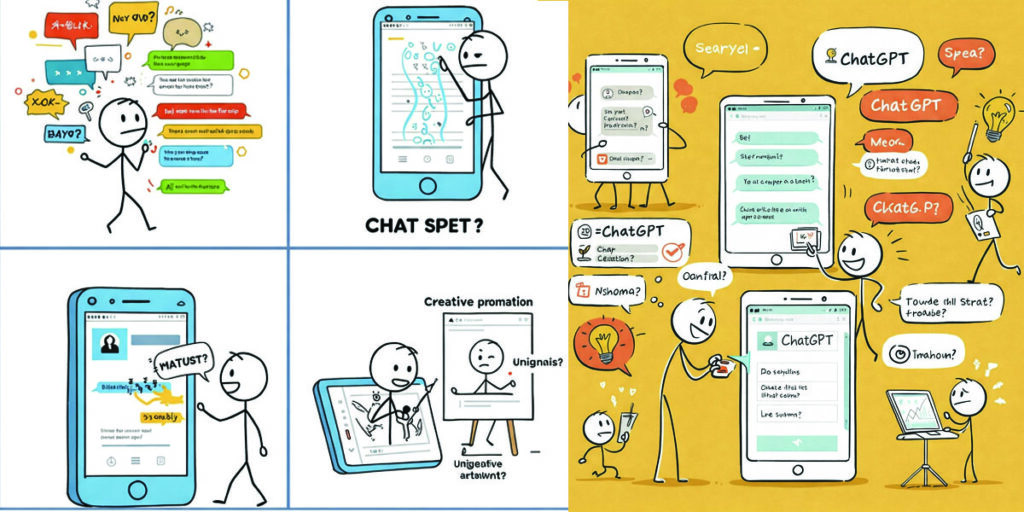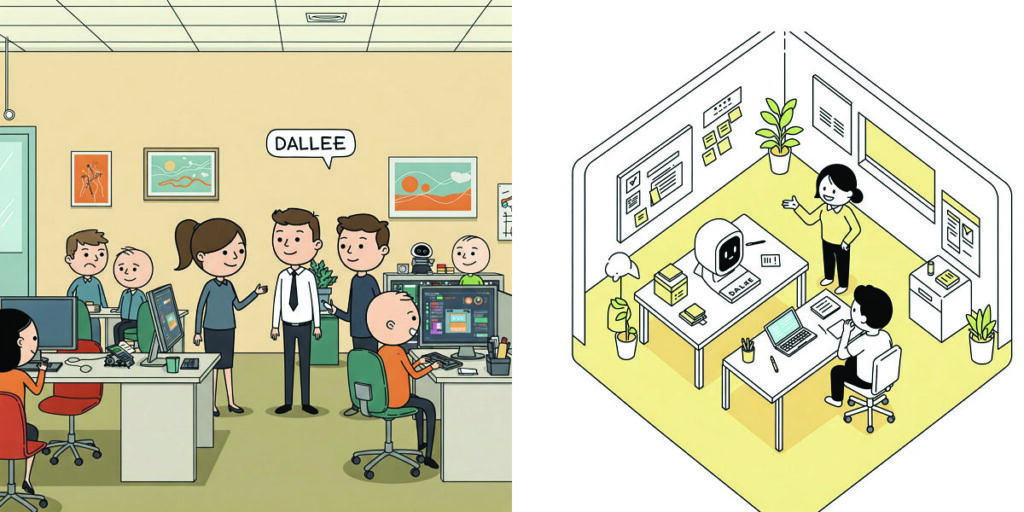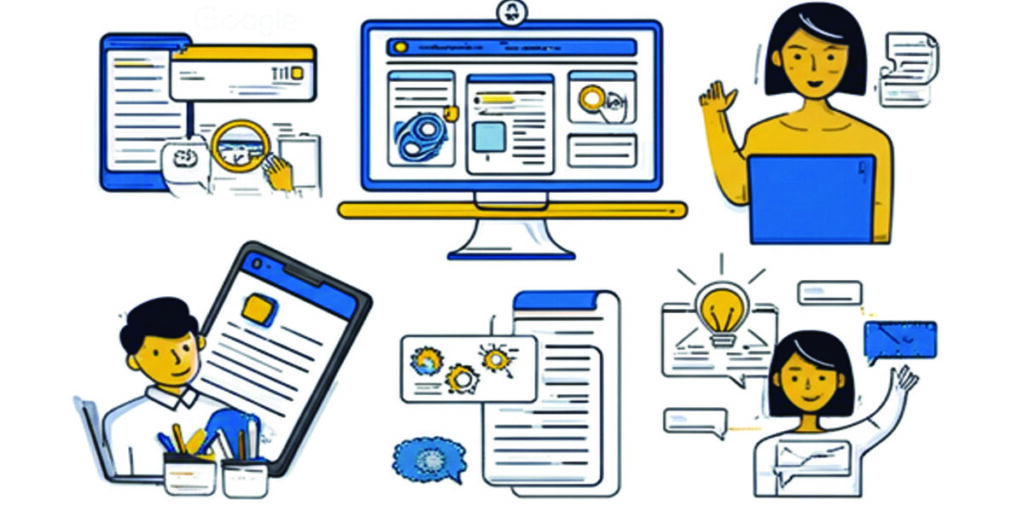Multi-bot AI platform allowing users to chat with various large language models in one place.
The digital landscape is constantly evolving, marked by waves of technological advancements that reshape how we interact with information and each other. In recent years, the rise of large language models (LLMs) has been one such transformative wave, promising to revolutionize fields ranging from content creation to customer service. Amidst this burgeoning AI ecosystem, Poe by Quora has emerged as a significant platform, offering users a unique gateway to interact with a diverse array of these powerful LLMs in a single, unified interface. To truly understand Poe’s significance, we must delve into its history, analyze its position within the economic market of AI, and explore the inherent power of the networking it facilitates between users and cutting-edge AI.
A Genesis Rooted in Knowledge Sharing: The History of Quora and the Birth of Poe
The story of Poe is inextricably linked to its parent company, Quora. Founded in 2009 by former Facebook employees Adam D’Angelo and Charlie Cheever, Quora established itself as a question-and-answer platform driven by the principle of knowledge sharing. Unlike traditional forums, Quora emphasized high-quality, well-researched answers, fostering a community of experts and individuals passionate about specific subjects. Over the years, Quora cultivated a vast repository of human-generated knowledge, spanning an immense range of topics. This foundation of democratized information and the infrastructure built to support it laid the groundwork for Quora’s foray into the realm of artificial intelligence.
As LLMs began to demonstrate their capabilities in generating human-like text, answering questions, and engaging in conversations, Quora recognized the potential synergy between these AI models and its existing user base. The core mission of Quora – to share and grow the world’s knowledge – could be significantly amplified by providing users with direct access to these powerful AI tools. This vision led to the development and launch of Poe (Platform for Open Exploration) in early 2023.
Poe was conceived as a multi-bot AI platform, a centralized hub where users could interact with various LLMs developed by different organizations. This approach was novel in a landscape where access to individual LLMs often required navigating separate interfaces and potentially dealing with different subscription models. Poe aimed to democratize access to AI, making it easier for individuals to explore the strengths and weaknesses of different models, compare their outputs, and ultimately leverage their capabilities for a wide range of tasks.
The initial rollout of Poe featured a curated selection of prominent LLMs, including OpenAI’s ChatGPT and Anthropic’s Claude. This immediately positioned Poe as a platform offering access to some of the most advanced AI models available at the time. The user interface was designed to be intuitive and user-friendly, allowing individuals with varying levels of technical expertise to engage with the AI bots seamlessly. Users could pose questions, request creative content, seek summaries of information, and even engage in more open-ended conversations, all within the familiar environment of the Poe app or web interface.
The early reception of Poe was largely positive. Users appreciated the convenience of having multiple powerful AI models at their fingertips. The ability to directly compare the responses of different bots to the same prompt proved to be a valuable feature, highlighting the nuanced differences in their training data and architectural approaches. This comparative aspect fostered a deeper understanding of the capabilities and limitations of each model.
Over time, Poe has continued to evolve, adding support for more LLMs, including those developed by Google (like PaLM 2), Meta (like Llama 2), and other emerging AI labs. The platform has also introduced new features aimed at enhancing the user experience, such as the ability to create custom bots by fine-tuning existing models or combining their functionalities. This expansion reflects Poe’s commitment to providing a comprehensive and adaptable AI interaction platform.
Navigating the Economic Market of AI: Poe’s Value Proposition and Competitive Landscape
Poe operates within the rapidly expanding economic market of artificial intelligence. This market encompasses a wide range of products and services, including AI software platforms, AI-powered applications, AI infrastructure, and AI consulting services. The LLM segment, in particular, has witnessed significant growth, driven by the increasing capabilities of these models and their diverse applications across various industries.
Poe’s economic value proposition rests on several key pillars:
- Aggregated Access: Poe provides users with a convenient and cost-effective way to access multiple leading LLMs through a single subscription. Instead of subscribing to individual services, users can leverage the collective power of various models under one umbrella. This aggregation simplifies the user experience and potentially reduces overall costs.
- Comparative Advantage: The platform’s design encourages comparison between different LLMs. This allows users to identify the model that best suits their specific needs and tasks. For instance, one model might excel at creative writing, while another might be more adept at factual question answering or code generation. This comparative functionality enhances the utility and value of the platform.
- Democratization of AI: Poe lowers the barrier to entry for individuals and smaller organizations to leverage advanced AI capabilities. By providing an accessible and user-friendly interface, it empowers a broader audience to explore and integrate LLMs into their workflows and personal projects.
- Innovation and Experimentation: Poe fosters an environment of experimentation and innovation. By providing easy access to diverse AI models, it encourages users to explore novel applications and discover new ways to leverage LLM technology. The ability to create custom bots further fuels this innovation.
- Data and Insights: As users interact with various LLMs through Poe, the platform potentially gathers valuable data on user preferences, model performance, and common use cases. This data can be leveraged to improve the platform, refine the selection of models, and potentially develop new AI-powered features.
However, Poe also operates within a competitive landscape. The market for LLM access and AI platforms is becoming increasingly crowded, with several key players vying for user attention and market share. These include:
- Direct Access to LLM Providers: Companies like OpenAI, Anthropic, and Google offer direct access to their flagship LLMs through their own APIs and user interfaces. These providers often have a first-mover advantage and deep technical expertise in their respective models.
- Other Aggregation Platforms: While Poe was an early mover in the multi-bot platform space, other similar platforms have emerged, offering alternative selections of LLMs and potentially different pricing models.
- AI-Powered Applications: Numerous applications are integrating LLM capabilities directly into their workflows, potentially reducing the need for users to access standalone platforms like Poe. For example, writing assistants, coding tools, and customer service platforms are increasingly embedding AI directly into their functionality.
- Open-Source LLMs and Communities: The rise of powerful open-source LLMs and the communities surrounding them offer an alternative for users who prefer more control and customization, albeit often requiring greater technical expertise.
To maintain its competitive edge, Poe needs to continue to innovate, expand its selection of high-quality LLMs, enhance its user experience, and potentially explore new features and functionalities that differentiate it from other offerings in the market. The ability to foster a strong community around the platform and leverage the insights gained from user interactions will also be crucial for its long-term success.
The Power of AI Networking: Connecting Users and Cutting-Edge Intelligence
Beyond its historical development and economic positioning, a significant aspect of Poe’s value lies in the “networking” it facilitates – not in the traditional sense of computer networks, but in the connection it establishes between users and a diverse range of cutting-edge artificial intelligence. This networking effect has several important dimensions:
- Democratizing Access to Advanced AI: Poe acts as a central node in a network, connecting users who may not have the technical expertise or resources to directly interact with individual LLM APIs to these powerful tools. This democratization broadens the reach and impact of AI.
- Facilitating Exploration and Learning: By providing a unified interface to multiple LLMs, Poe encourages users to explore the different capabilities and nuances of each model. This comparative interaction fosters a deeper understanding of the strengths and weaknesses of various AI architectures and training methodologies. It becomes a learning platform where users can develop a more informed perspective on the evolving landscape of AI.
- Enabling Diverse Applications: The ability to access multiple LLMs through Poe empowers users to leverage AI for a wider range of applications. Depending on the task at hand, users can select the model that is best suited for the job, effectively creating a personalized AI toolkit. This versatility enhances the practical utility of the platform.
- Fostering a Community of AI Explorers: Poe’s user base forms a network of individuals interested in exploring and utilizing AI. This community can potentially share prompts, discuss findings, and collaborate on projects, further amplifying the collective learning and innovation around LLM technology. Quora’s existing community infrastructure provides a strong foundation for this kind of interaction.
- Providing Feedback and Shaping Future Development: The interactions between users and LLMs on Poe generate valuable data that can be used by both Poe and the developers of the underlying models. This feedback loop can contribute to the improvement of existing LLMs and inform the development of future AI technologies. Poe acts as a conduit for user feedback to reach the broader AI ecosystem.
- Creating Opportunities for Customization and Innovation: The introduction of custom bots on Poe allows users to further personalize their AI interactions by fine-tuning models or combining their functionalities. This opens up new avenues for innovation and the development of specialized AI tools tailored to specific needs. This represents a more advanced form of networking, where users can actively shape and extend the capabilities of the AI models themselves.
In essence, Poe acts as a powerful intermediary, creating a dynamic network between human users and the rapidly evolving world of large language models. This network fosters access, learning, application, community, and feedback, ultimately contributing to the broader understanding and adoption of AI technology.
Looking Ahead: The Future of Poe and the Evolving AI Landscape
The future of Poe is intertwined with the ongoing advancements and transformations within the field of artificial intelligence. Several key trends and potential developments could shape its trajectory:
- The Proliferation of Specialized LLMs: As the AI field matures, we are likely to see the emergence of more specialized LLMs trained for specific tasks and domains. Poe’s ability to integrate these niche models could become a significant differentiator.
- Advancements in Multimodal AI: Future AI models will likely be increasingly multimodal, capable of processing and generating not just text but also images, audio, and video. Poe’s platform could evolve to support interaction with these more complex AI systems.
- Increased Personalization and Customization: The trend towards personalized AI experiences is likely to continue. Poe’s custom bot feature could become even more sophisticated, allowing users to create highly tailored AI assistants.
- Integration with Other Platforms and Workflows: Poe could see deeper integration with other productivity tools and platforms, embedding AI capabilities directly into users’ existing workflows.
- The Importance of Trust and Safety: As AI becomes more integrated into our lives, issues of trust, safety, and responsible AI development will become paramount. Poe will need to ensure that the LLMs it hosts adhere to high ethical standards and that user interactions are secure and private.
- The Role of Community and Collaboration: Fostering a strong community around Poe could become increasingly important for user engagement, knowledge sharing, and the discovery of new AI applications.
In conclusion, Poe by Quora represents a significant step in the evolution of AI accessibility and interaction. Its history is rooted in Quora’s mission of knowledge sharing, and its emergence as a multi-bot platform reflects a forward-thinking approach to the burgeoning field of large language models. Its position within the economic market is defined by its value proposition of aggregated access, comparative advantage, and democratization of AI. Crucially, Poe fosters a powerful network between users and cutting-edge AI, enabling exploration, learning, diverse applications, and community building. As the AI landscape continues to evolve at a rapid pace, Poe’s ability to adapt, innovate, and maintain its position as a central hub for AI interaction will be key to its continued success and its contribution to the broader adoption and understanding of artificial intelligence. The platform’s journey is a testament to the transformative power of connecting human curiosity with the ever-expanding capabilities of intelligent machines.




















